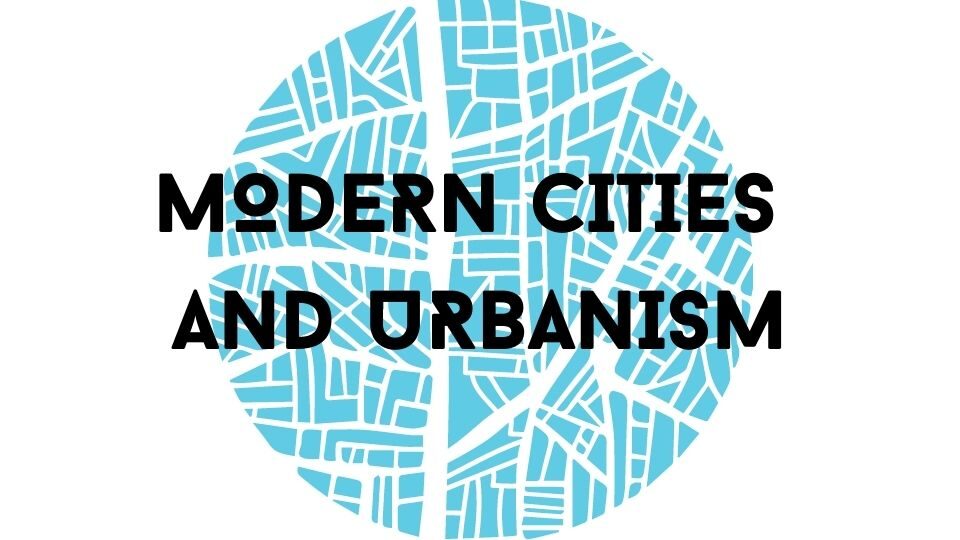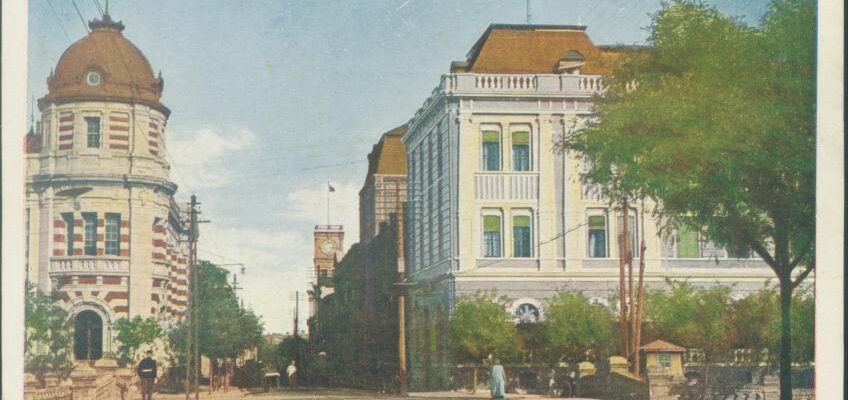QUESTIONS:
Where was Beijing situated historically in the era of colonial empires?
Was it a site of colonial settlement?
How is the colonial history reflected in built form?
How to deal with colonial sites and legacies after decolonization?
Throughout modern Chinese history, the Beijing Legation Quarter has always been seen as a symbol of colonialism by the Chinese. So in Chinese, it is also known as “the state within the state (国中之国).” This short report focuses on how the Legation Quarter was colonized and decolonized through history. It also aims to find how the spatial attributes of the Quarter changed and fit into different political contexts.
The Legation Quarter lies in the southern part of the Inner City near the city wall. Before it became the Foreign Legation Quarter, this area functioned to accommodate diplomatic envoys from tributary states (Tan, 2008, 25). It changed to the Legation Quarter based on articles of the Treaty of Tianjin in 1861. According to Michael J. Moser, Western countries preferred to choose this area because it was near major Qing bureaucracies and had the location advantage for diplomatic activities (Moser, 1993, 18). By 1900, 11 legations had settled in Beijing. And during the early settlement, not much architectural change happened in the Legation Quarter. Most legations adopted old noble palaces assigned by the Qing Government as residences. Moreover, as the Qing government still allowed native Chinese residents to live in the Quarter before 1900, the Chinese world was never far from foreigners (Moser, 38). As Moser suggests, it was common that foreign legations were set alongside native Chinese residences (Moser, 33). Though the Chinese stayed wary and felt antipathetic with foreigners, they lived in peace with the foreign community for nearly 40 years. By the end of the 19th century, some foreigners already believed that the Chinese hostility towards Westerners had subsided (Moser, 38). However, this illusion vanished after the Boxer Rebellion broke out.
China’s anti-foreign sentiment had already risen after the First Opium War. In 1890s, the anti-foreign feeling was aggravated in Chinese rural areas and Chinese peasants blamed their suffering on missionaries and the foreign intervention in Chinese politics (Moser, 46). In 1899, the Boxer Rebellion broke out in Shandong. The aims of the Boxers were simple – death to foreigners and an end to foreign influence in China. Their targets at first were Chinese Christian converts and then extended to foreign missionaries (Moser, 46). As the Rebellion expanded rapidly, in May 1900, the Boxers reached Beijing which caused widespread panic through foreign communities (Moser, 50). Foreign missionaries and Chinese Christian converts near Beijing were terrified and rushed to the Legation Quarter seeking refuge. Though foreign diplomats urged the Qing government to control the turbulence, the court remained inactive, which aggravated the situation (Moser, 52). After the diplomats denied the Qing’s request to evacuate from the Legation Quarter, the Boxer Siege began on June 20th and lasted for 55 days. By analyzing multiple diaries from people under siege, Julia Boyd suggests that living supplies became a huge problem in the Quarter, and desperate emotion spread among the foreigners as reinforcements were delayed (Boyd 2012, 10). The chaotic situation finally ended after the Eight-Nation Alliance arrived in Beijing. Most of the buildings in the Quarter were damaged after the siege, and the violence also caused severe casualties. According to Moser, 76 foreigners died and 179 were wounded inside the Quarter alone. Several thousand foreign missionaries died at the Boxers’ hands, and the number of Chinese casualties is unknown (Moser, 67).
The Boxer Protocol was signed between the Qing government and western countries in 1901 after the Eight-Nation Alliance occupied Beijing. According to the Protocol, in addition to paying a large indemnity, the Qing government was required to rebuild the Legation Quarter. As Moser describes, the Legation Quarter expanded more than 200 acres during the rebuilding process (Moser, 94). Chinese civilians were no longer allowed in the Legation Quarter. The Chinese residents were forced out, and their buildings were also torn down. In order to keep safety, every legation had a private garrison. The foreign community that lived inside the Quarter enjoyed exterritoriality, and as the world inside separated from the native Chinese society, the Quarter developed its own public service system (Moser, 94). As Yixiao Tan argues, the rebuilding process made the Legation Quarter finally turned to a colonial site inside Beijing (Tan, 87).
Colonialism was mainly manifested in the changing of architecture in the Legation Quarter. According to Fuhe Zhang, during the rebuilding process, most of the buildings were masonry structures instead of wooden structures (Zhang, 2008, 91). Moreover, to completely adopt Western styles, the foreign community also brought several fashionable architectural styles to the Quarter. The Yokohama Bank was built in the trendy Tatsuno style, decorated with white and red bricks, and the St. Michel Church was a Gothic design (Zhang, 100, 106). Numerous supporting facilities also settled in the Quarter, including clubs, department stores, hospitals, and skating rinks. According to some foreigners’ diaries, the foreign community had modern lives inside the Quarter, which sharply contrasted with the native Chinese world (Boyd, 121).
The separation between the Legation Quarter and the native Chinese world ended after the Qing government collapsed. However, the foreign community remained isolated from the Chinese as they clung closely to their own society (Moser, 113). After the KMT government moved the political center to Nanjing, most foreign diplomats traveled to Nanjing to resume their functions. Thus, the Legation Quarter in Beijing gradually became a cultural center for the foreign communities (Boyd, 156). According to Boyd, the Legation Quarter was equipped with perfect living facilities that some diplomats chose to stay in Beijing rather than Nanjing while they were off-duty (Boyd, 155). And as she also suggests, the foreign community in Beijing Legation Quarter was keen on social activities rather than joining commercial activities, which was different from foreigners in other Chinese colonies (Boyd, 124).
Life inside the Legation Quarter kept peaceful until the Japanese invaded Beijing in 1937. The foreign community, though terrified, did not expect that life would change. Some foreigners still stayed in Beijing while the Western countries encouraged them to evacuate (Moser, 139). However, the situation changed rapidly after the Pearl Harbor Incident, and the Japanese decided to move the foreigners into a ghetto located in Shandong. Some foreigners died in the ghetto, some returned to their home countries after Japan was defeated, and only a few people went back to the Legation Quarter in Beijing (Boyd, 210).
After the CCP took control of Beijing in 1949, the Legation Quarter’s history ended. The communists always remained a negative view to the Quarter. According to a quote from CCP’s organ in 1923, the Legation Quarter was described as the overlord of Chinese politics and must be demolished to fight off the effects of imperialism (Tan, 14). So when Beijing was peacefully emancipated, the CCP decided to hold a military parade inside the city and deliberately chose to go along Legation Street after they passed the Zhengyang Gate, which, as Tan argues, was a symbolic action based on Mao’s idea (Tan, 174). In the 1950s, the communist government decided to re-plan the Legation Quarter and relocate the foreign embassies to another area. While Tan describes the re-planning of the Legation Quarter as a sign that China regained its sovereignty and overthrew imperialism in China, the British historian J. L. Cranmer-Byng describes it as a symbol of Western countries establishing a new form of diplomatic relationship with China (Tan, 175; Cranmer-Byng, 87). The CCP did not tear down the Quarter during the 1950s but let several government sectors move into the old legations. The Supreme Court moved into the old Russian Legation, and the Beijing local government occupied the Japanese Legation until 2015. According to Tan, by giving new political meaning to the Quarter, the communist government developed a new ideology of decolonization, which highlighted the victory of the Chinese from occupying the colonizers’ legacies (Tan, 176). However, when the Cultural Revolution began, Legation Street was renamed the Anti-imperialist Road and several buildings were demolished. So when people visit Legation Street today, only a few colonial-styled buildings still remain.
In conclusion, within a century, the Beijing Legation Quarter experienced both the colonizing and decolonizing process. The Legation Quarter served as a usual diplomatic area before the Boxer Rebellion and turned into an enclave under the control of imperialism and colonialism. The Quarter remained isolated from other parts of the city even Beijing had already lost its political function during the Republican period. The impact of colonialism mainly presented on architectural styles, which made the Legation Quarter different from the traditional oriental Beijing. After establishing the PRC, the communist government did not demolish the colonial sites but offered a unique ideology to deal with the colonial legacies. As the scholars suggest, this ideology strengthened the victory that communist China achieved with the imperialist countries and helped Beijing preserve its history. With these western-styled buildings still standing in the center of Beijing, the tourists and the young who visit will easily recall the colonized history of the city and the country.
Bibliography:
Moser, Michael J., Yeone Wei-Chih Moser. Foreigners within the Gates: The Legations at Peking. New York: Oxford University Press, 1993.
Boyd, Julia. A Dance with the Dragon: The Vanished World of Peking’s Foreign Colony. New York: I. B. Tauris, 2012.
Cranmer-Byng, J. L. “The Old British Legation at Peking, 1860-1959: Based on a Lecture Delivered on 20 August, 1962.” Journal of the Hong Kong Branch of the Royal Asiatic Society 3, (1963): 60-87.
Zhang, Fuhe. 图说北京近代建筑史 (The Modern Architectural History of Beijing). Beijing: Tsinghua University Press, 2008.
Tan, Yixiao. 北京东交民巷 (The History of Beijing Legation Street). Tianjin: Tianjin University Press, 2008.

